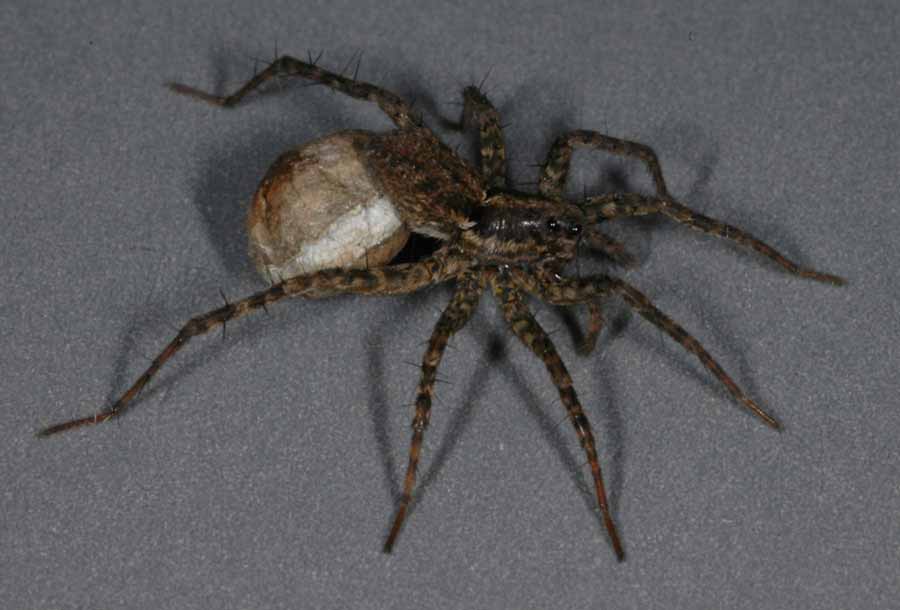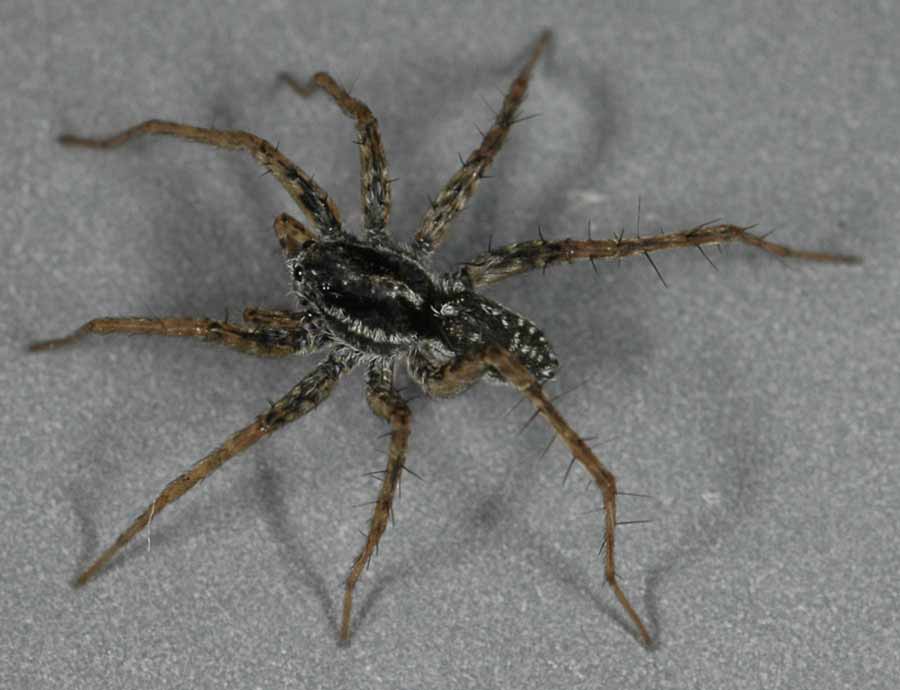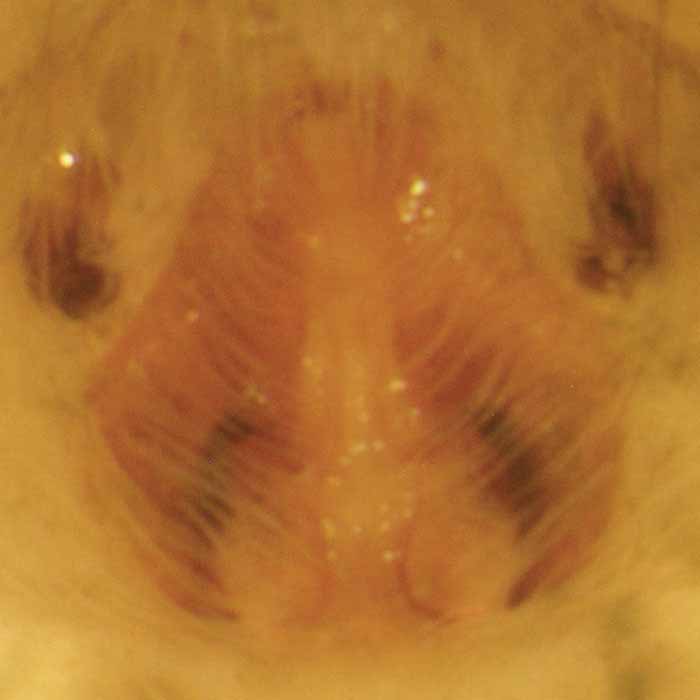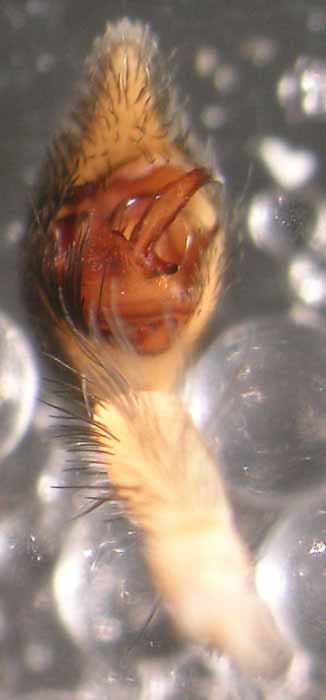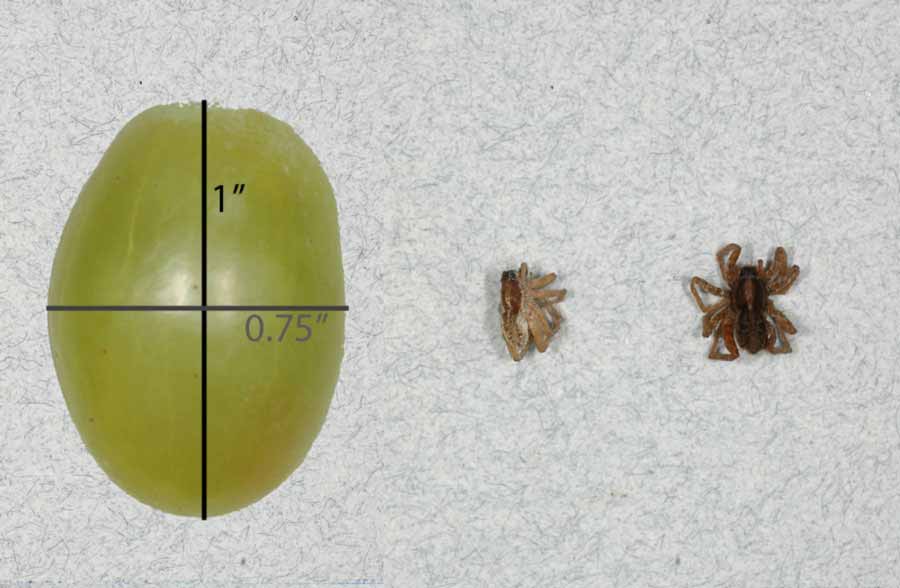Pardosa ramulosa
|
adult female, live; carrying egg sac on abdomen |
|
adult male, live |
|
female genitalia; epigynum |
|
male genitalia; palp, lateral view |
|
male genitalia; palp, ventral view |
|
grape size comparison with adult spiders; male (left), female (right) |
Current valid name
Pardosa ramulosa (McCook) (family Lycosidae)
Recognition and diagnostic features
Small to medium sized brown spider, large forward-facing PME with 4 small anterior eyes ventral to them.
Related or similar species
Schizocosa mccooki, Hololena nedra
Spider
Body lengths when mature: male: 4.6 - 5.5 mm, female: 5 - 7 mm
Immatures resemble miniature adults.
Egg sac
Wolf spiders carry their egg sacs around on the end of their abdomen until emergence of young, so one should not find a wolf spider egg sac in grapes.
Distribution
In California: most of the state except for northern counties
Elsewhere: Nevada, Utah, Arizona, Mexico
Native to North America
This species has not been transported or become established outside of its range.
Biology
Wandering hunting spider with very good eyesight. Usually found on the ground and in leaf litter. Mature specimens have been collected year-round.
Status in table grapes
Level of Incidence: may be common on the ground but rare in grape bunches
Level of Concern in New Zealand: WPNZ (May 2010) nr, BORIC (Dec 2011) nr (not listed), MAF-BPRA (2002) nr (coding definition)
Level of Concern in Australia: WPAU (2006) nr (coding definition)
Level of Medical importance: none
Common name
None for species, wolf spiders for family
Taxonomic history
Stable
Selected references
Vogel, B. R. 2004. A review of the spider genera Pardosa and Acantholycosa (Araneae, Lycosidae) of the 48 contiguous United States. J. Arachnol. 32: 55-108.

